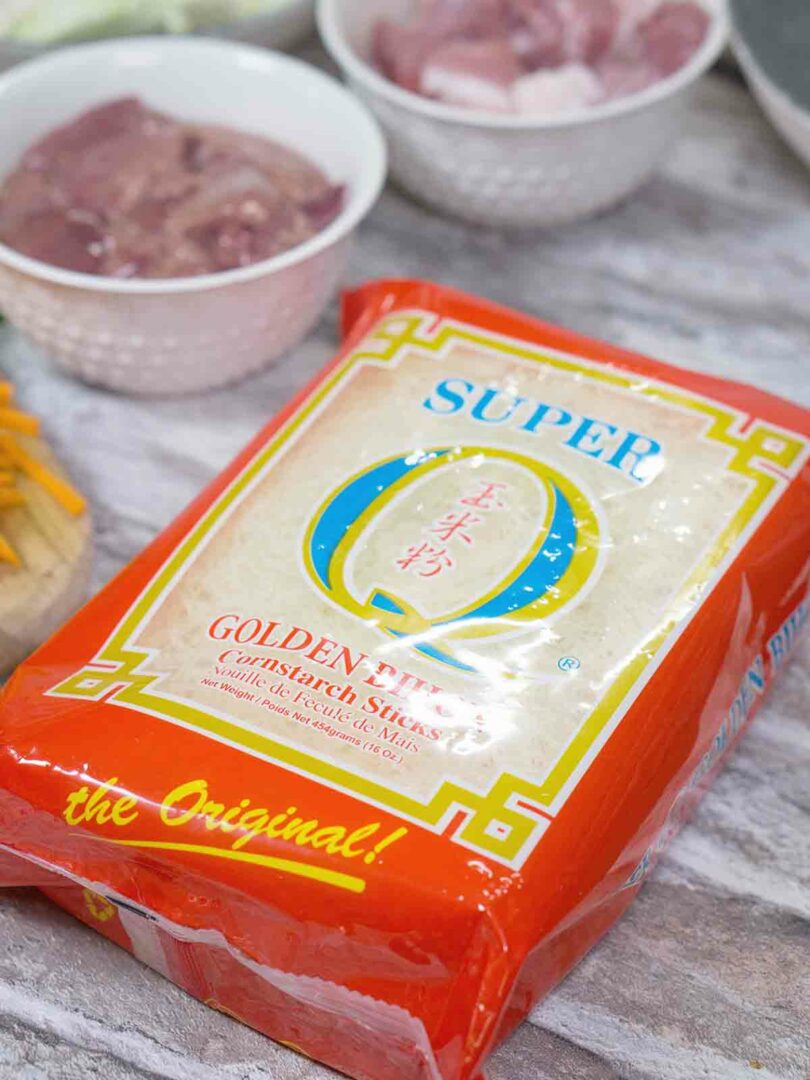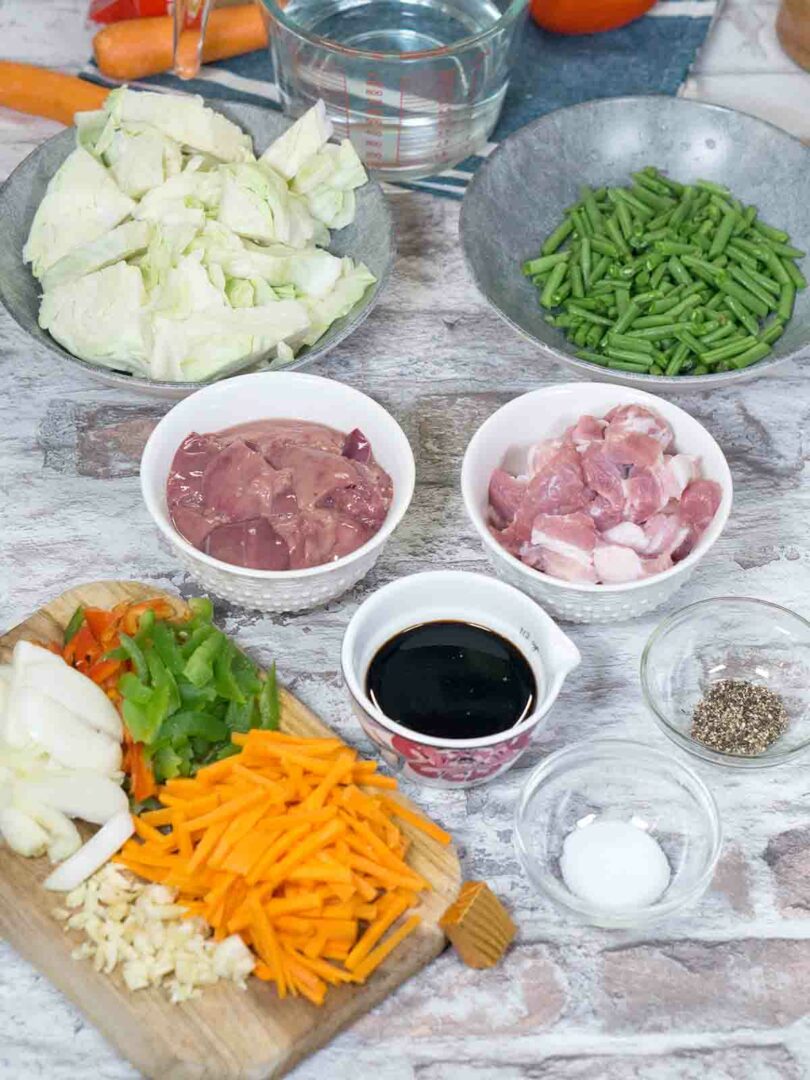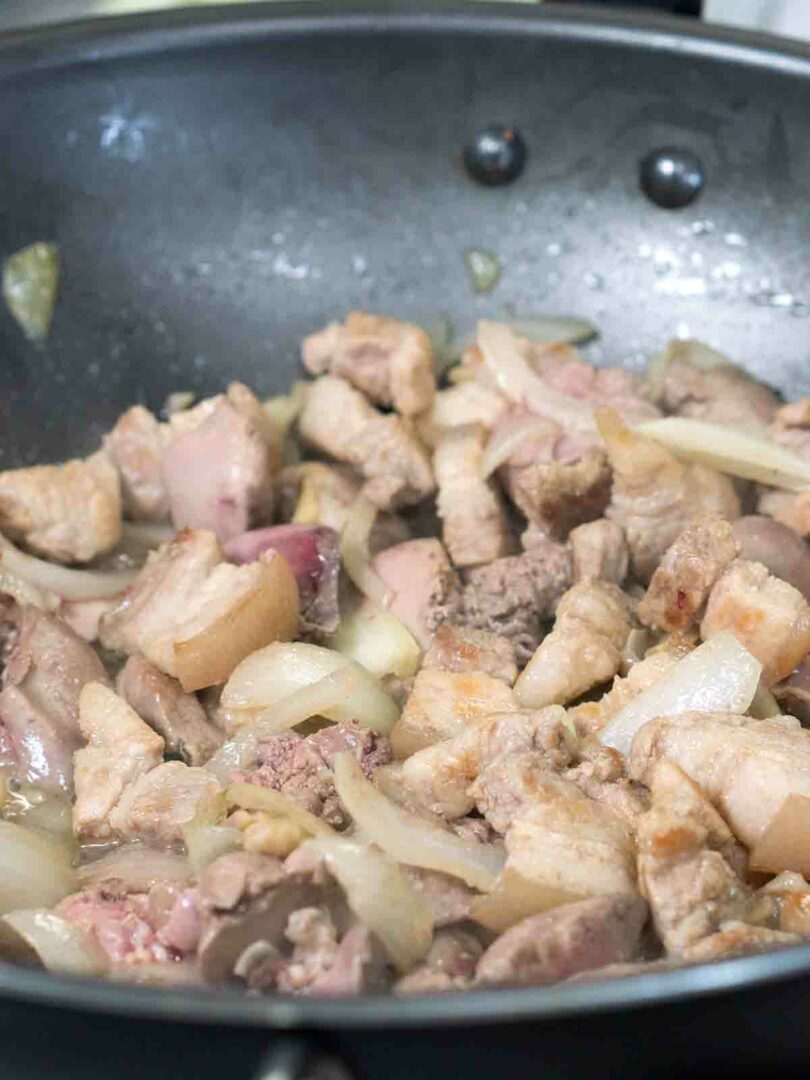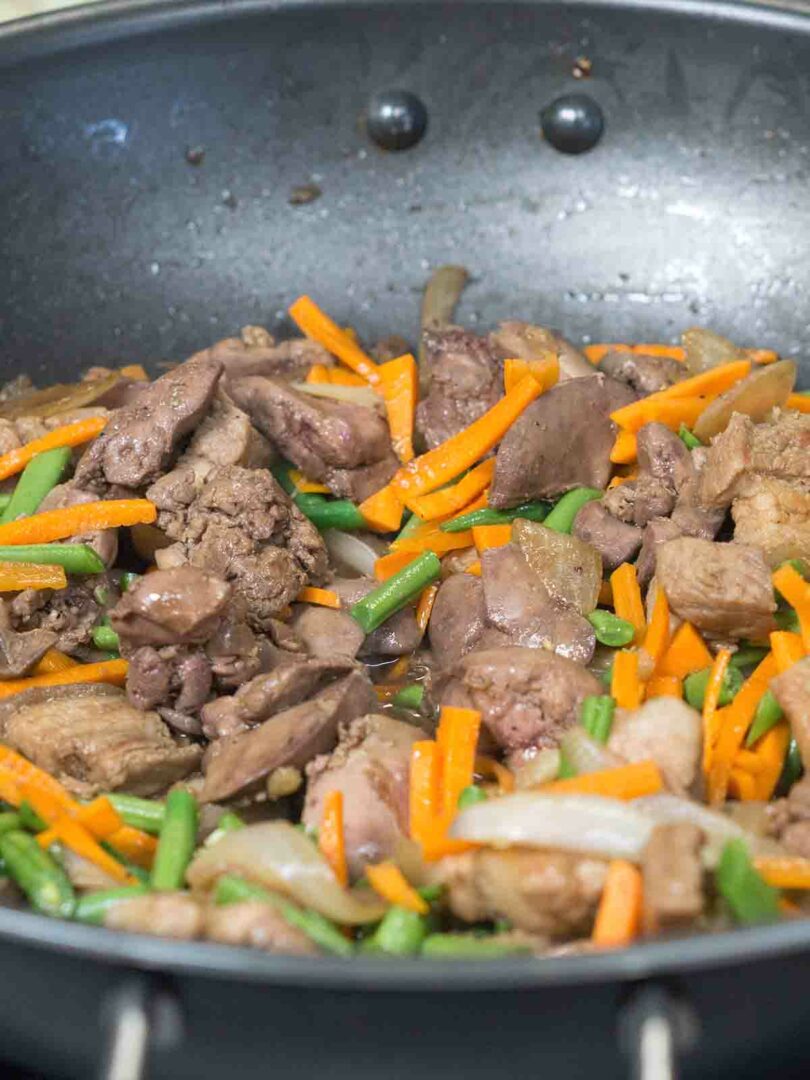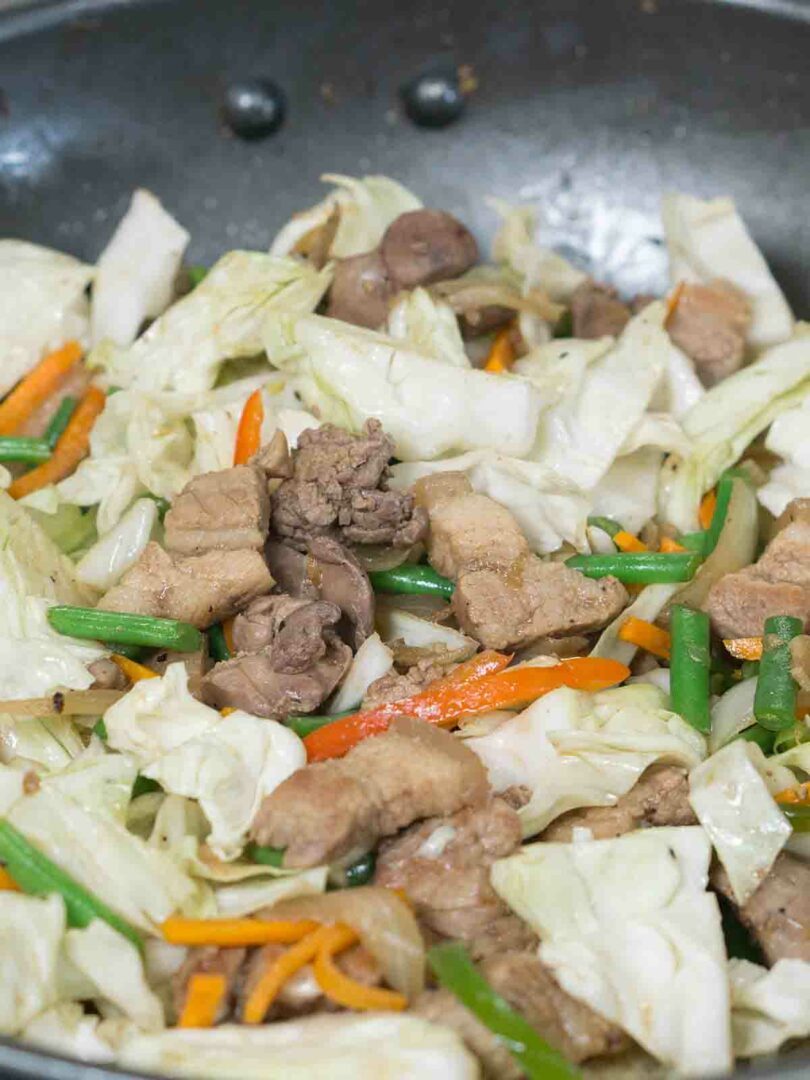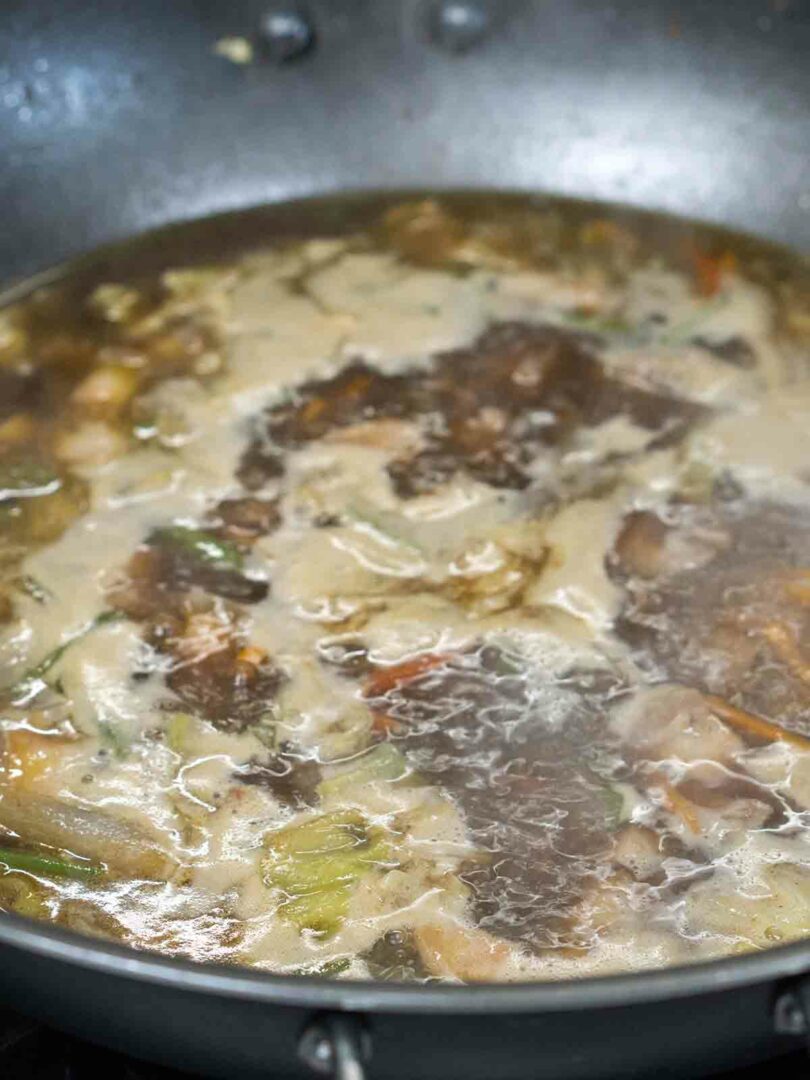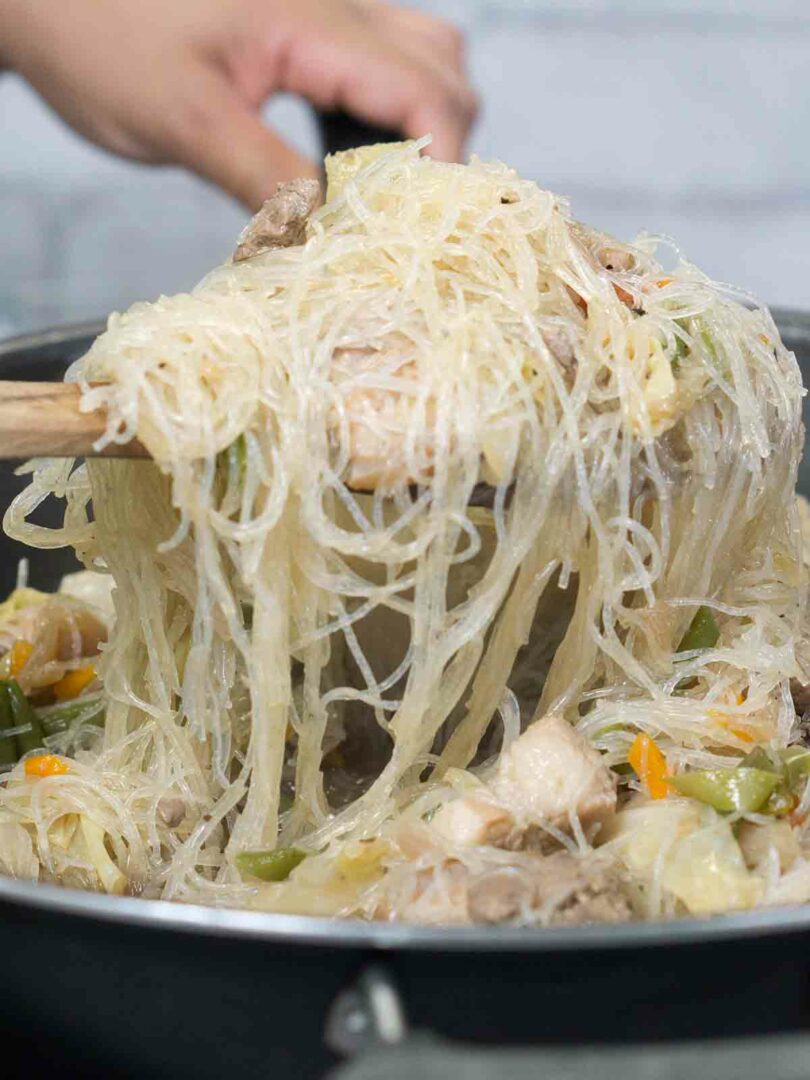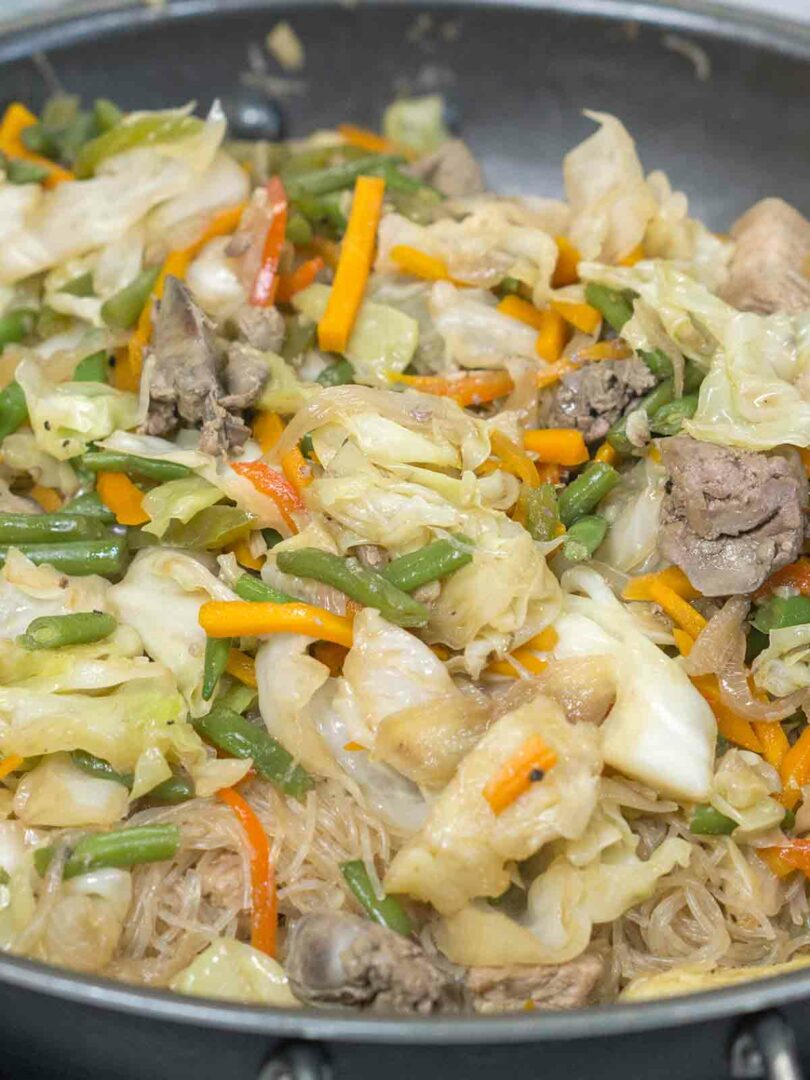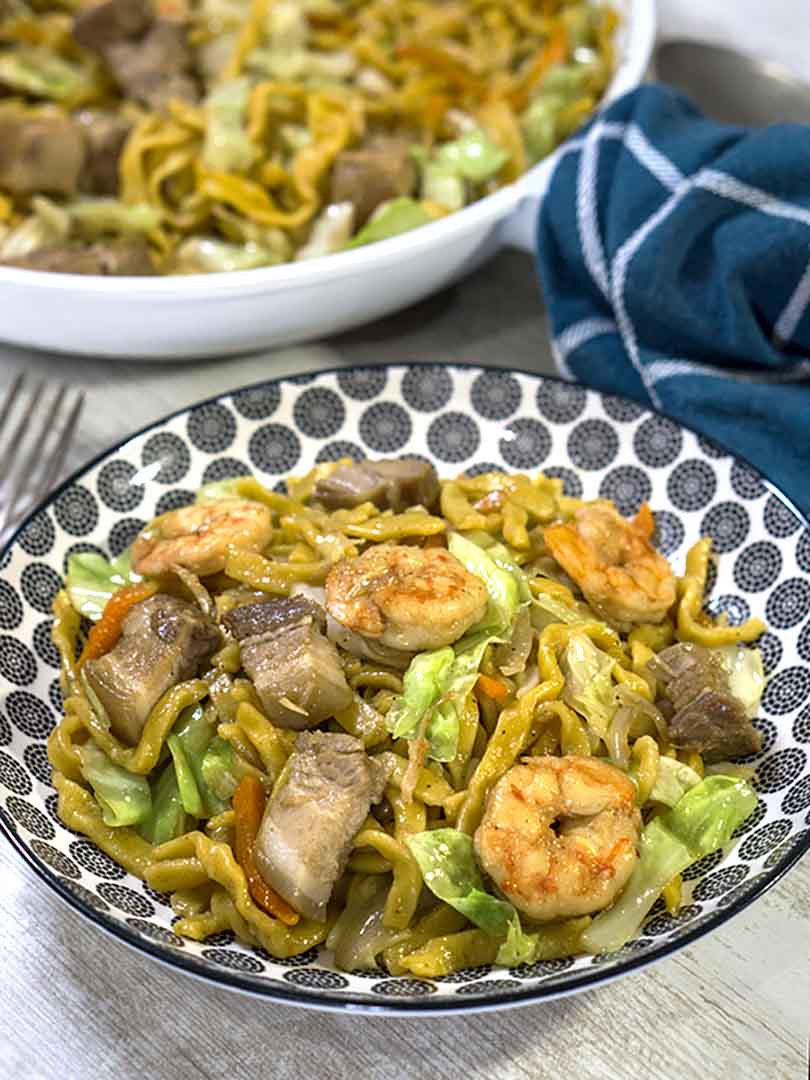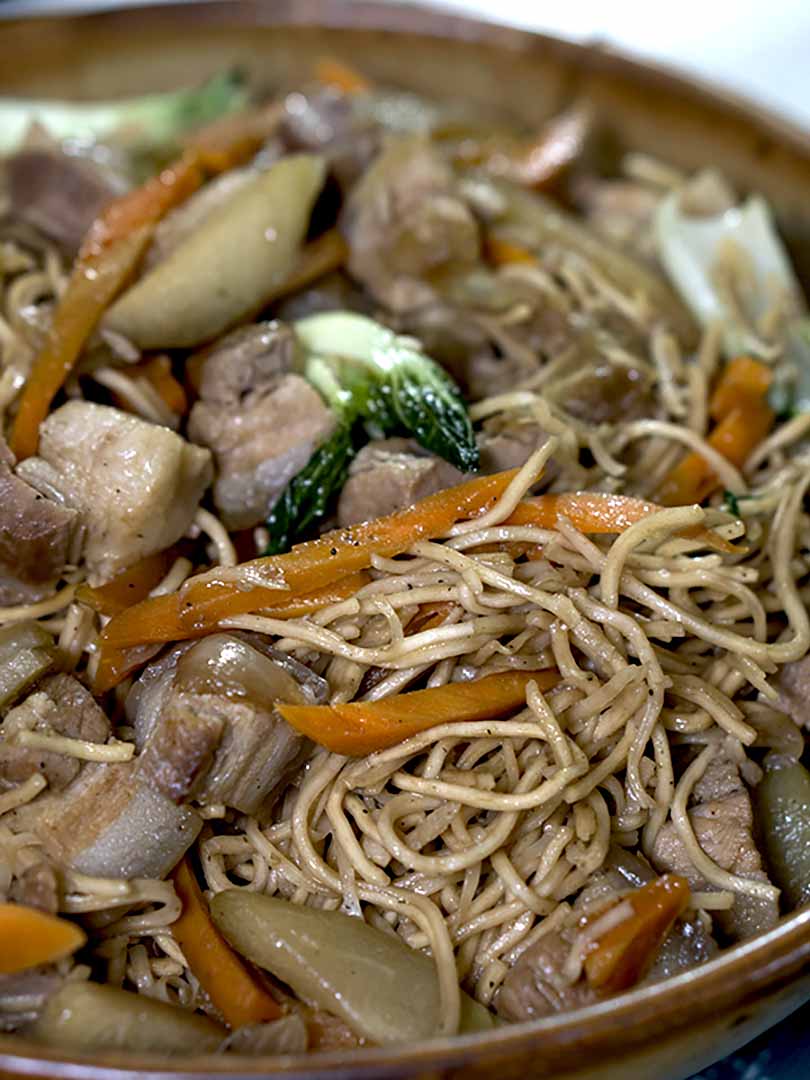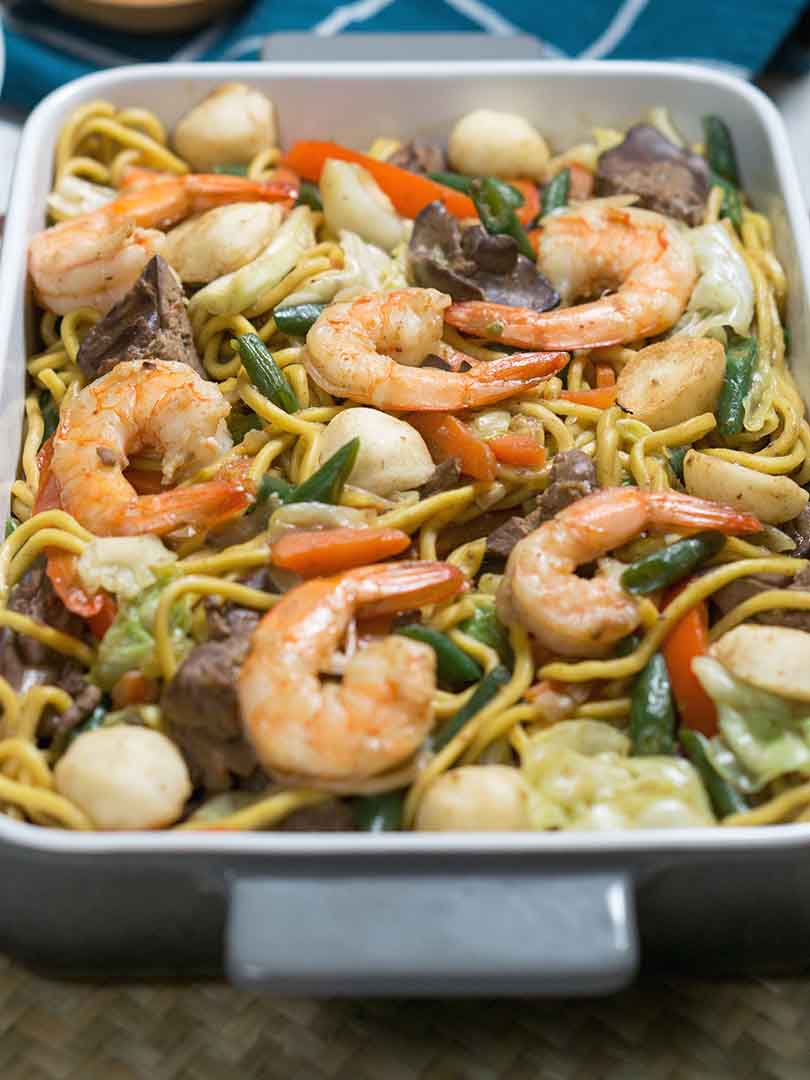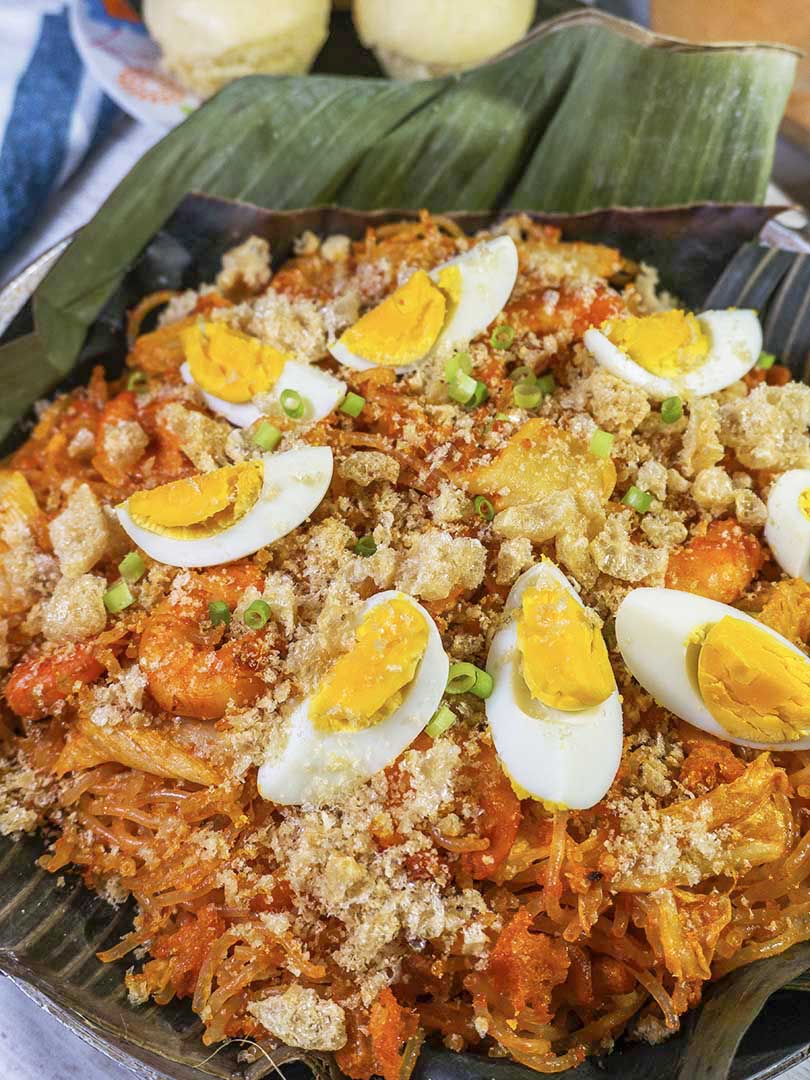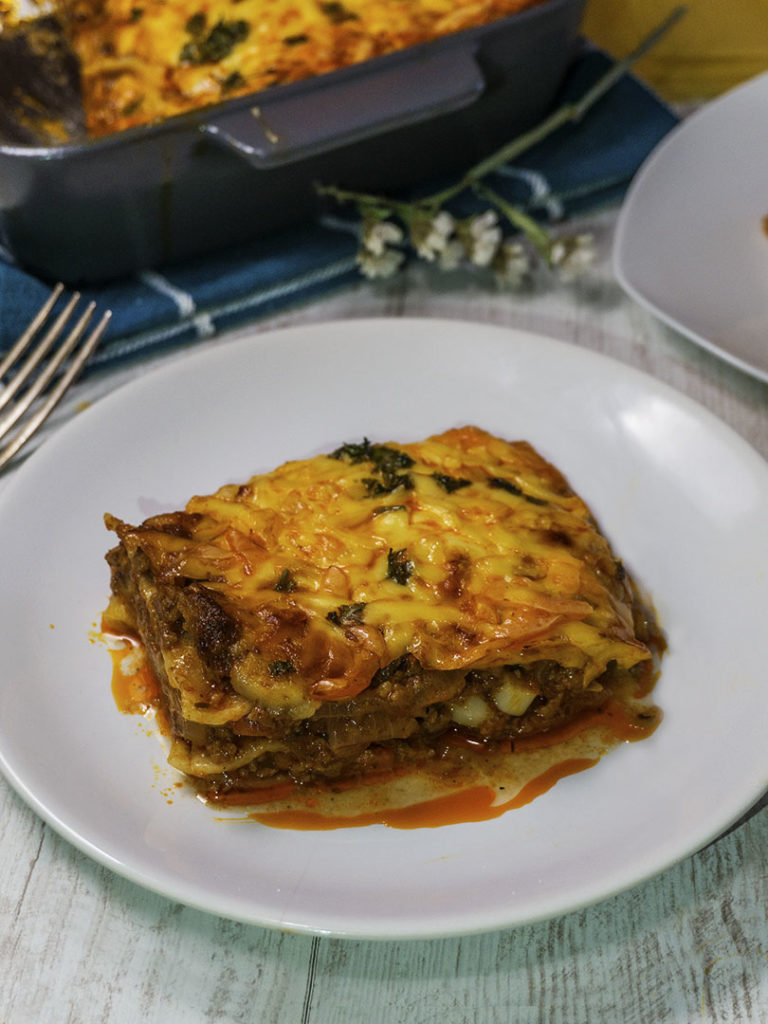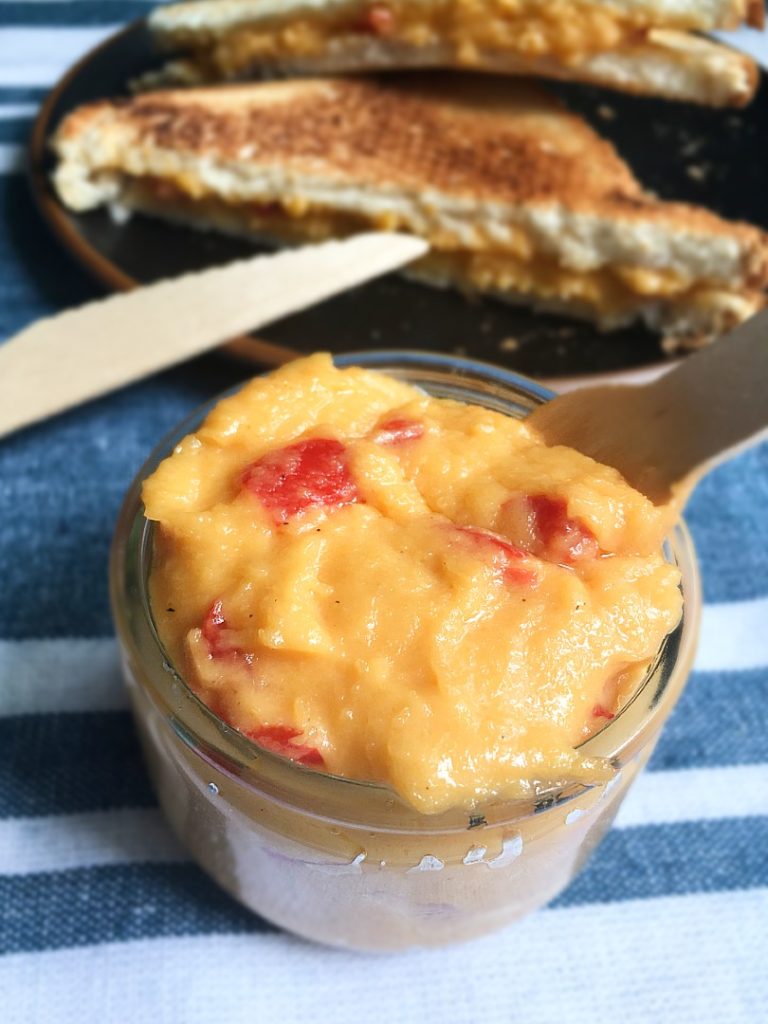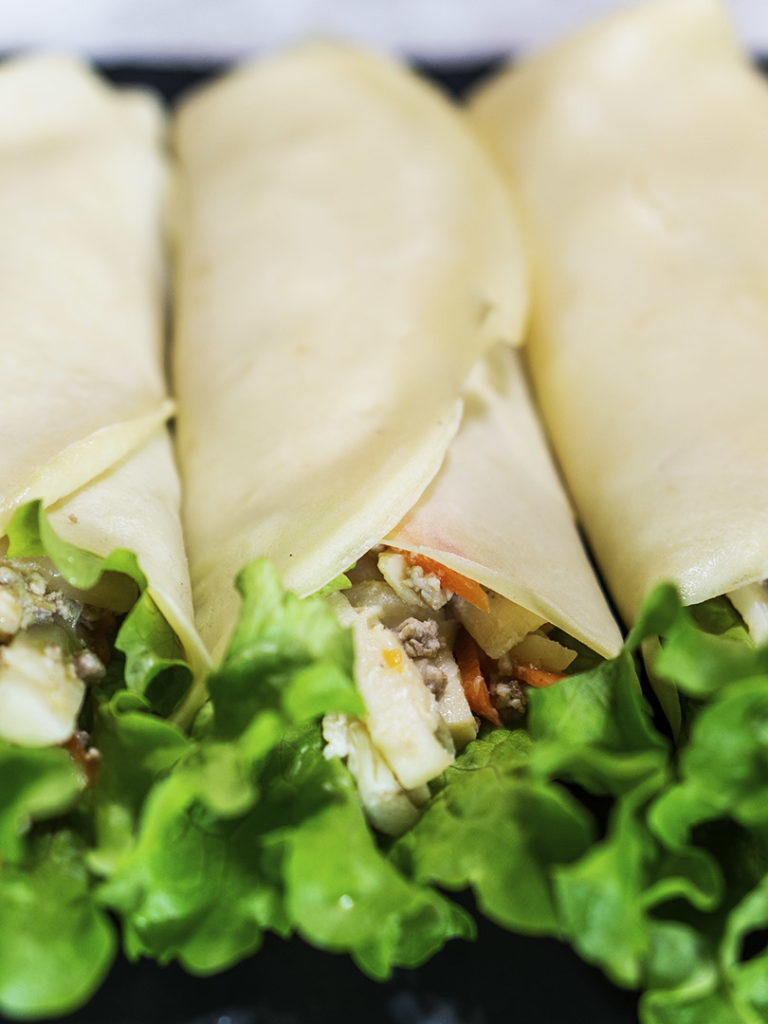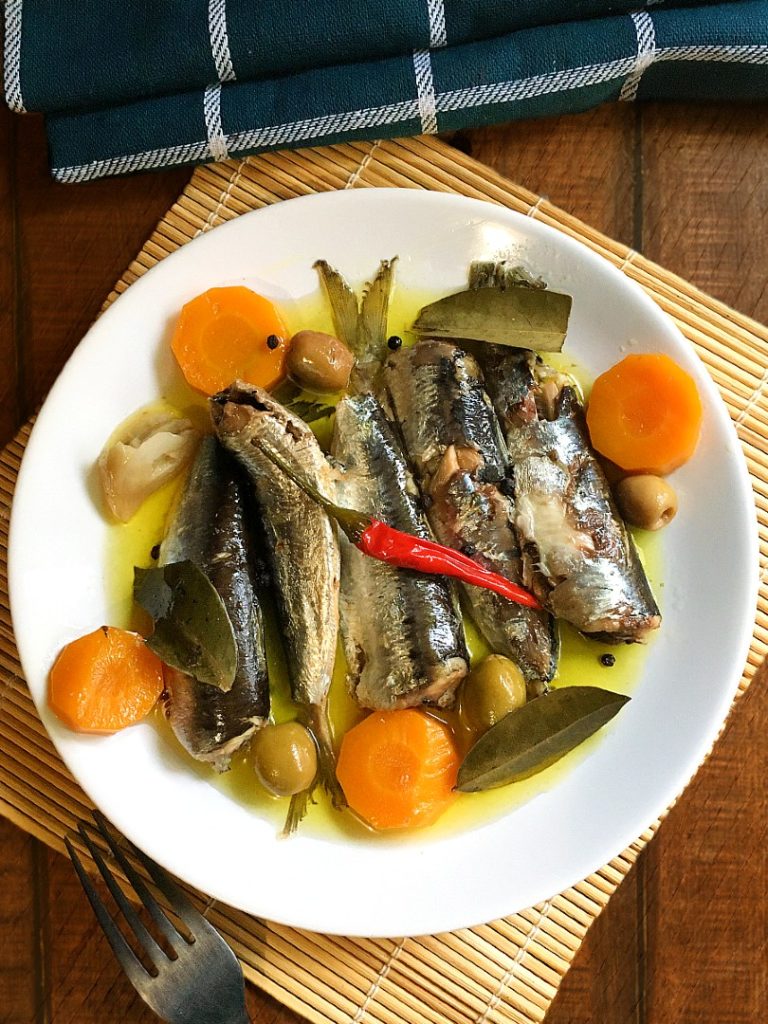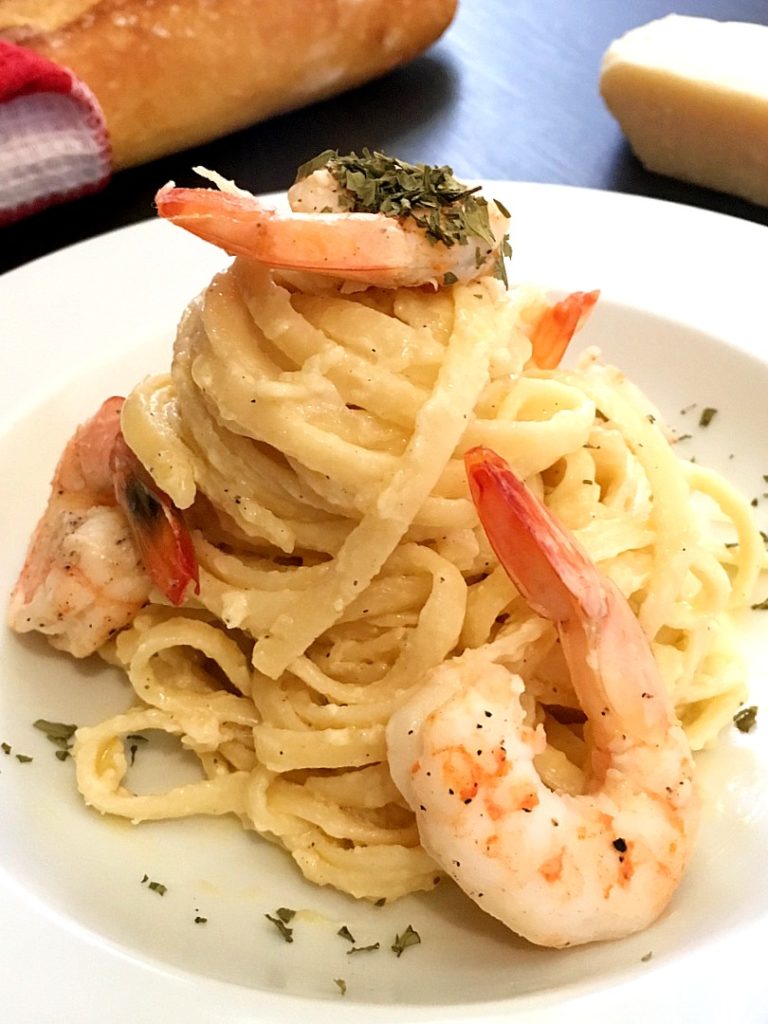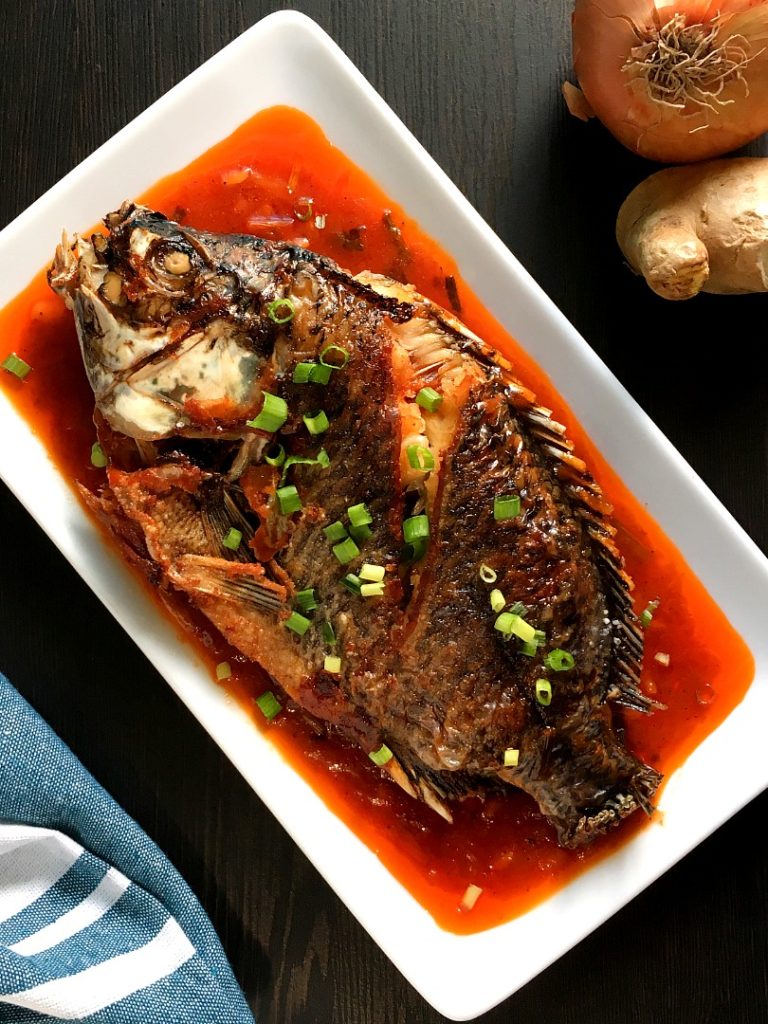Pancit Bihon
Pancit Bihon is one of the most beloved classic Filipino noodle dish. With delectable flavors and delightful texture, this quick and easy pancit recipe can be enjoyed in 30 minutes or less!
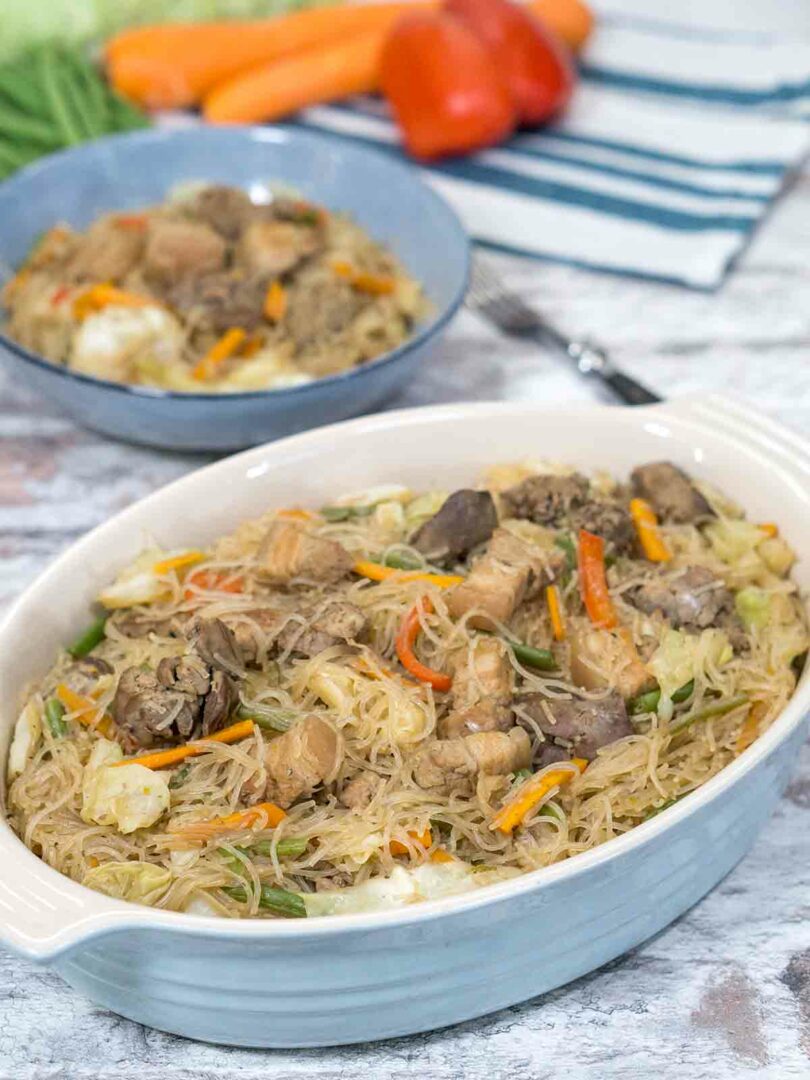
Whether we are wishing our love ones prosperity or long life, noodle dishes are always a great way to celebrate their special day. This is a simple pancit bihon recipe but you can experiment to see what best suits your taste.
Ingredients you’ll need
Notes and substitutions
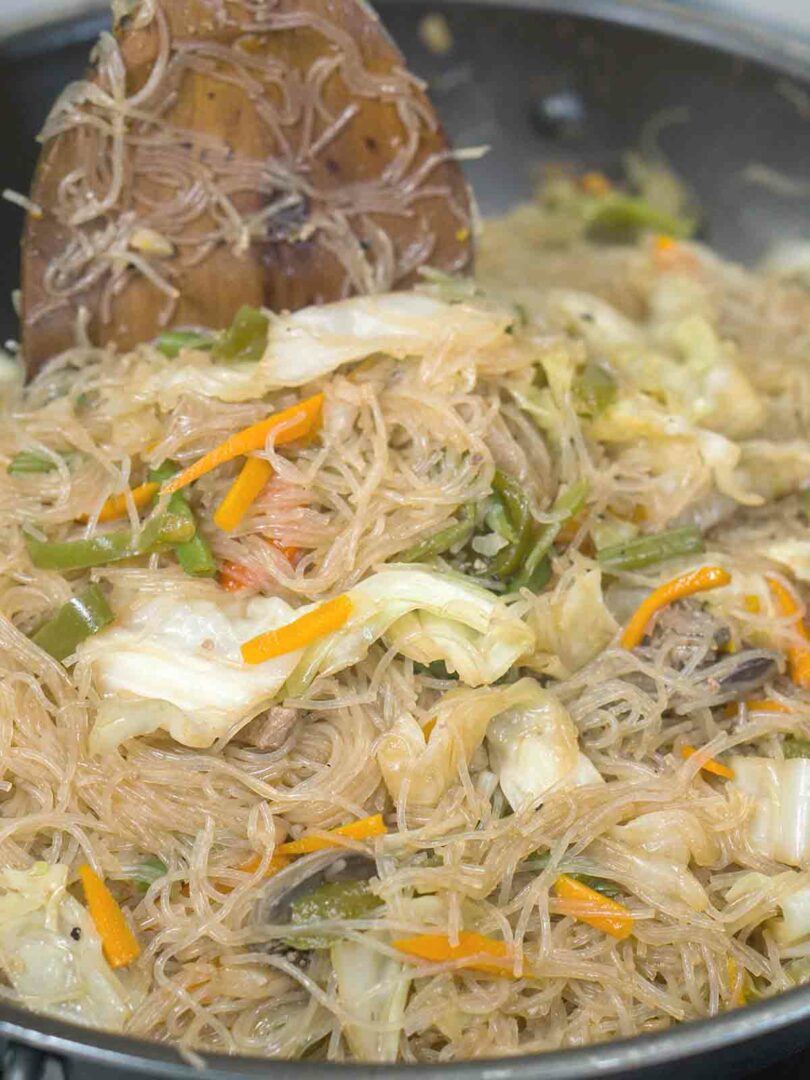
How to make this recipe
Step 1: Soak the bihon or rice noodles in warm water, for 8-10 minutes or until soften. Drain on a colander and set aside.
Step 2: Heat a wok or skillet on medium to high heat without oil. Tip in pork strips and cook until lightly browned and fat has rendered.
Step 3: Add the oil and sauté garlic until fragrant then sauté onion until translucent. Add the chicken liver, fry until browned, no pink is visible or cook through.
Step 4: Tip in salt, ground black pepper, sugar and soy sauce. Mix and simmer for a minute. Add carrots and green bean into the wok. Stir to distribute with other ingredients. Cook for 2-3 minutes.
Step 5: Next, add cabbage and bell peppers. Mix to incorporate then add water. Simmer for 3-5 minutes. Using a slotted spoon remove vegetables and transfer in a medium bowl. Set aside.
Step 6: Add the shrimp broth cube and more water if needed. Place softened bihon and gently submerged in liquid. Cook until liquid is reduces then return the vegetables and carefully toss in with noodles to mix everything together. Serve and enjoy!
Recipe FAQs
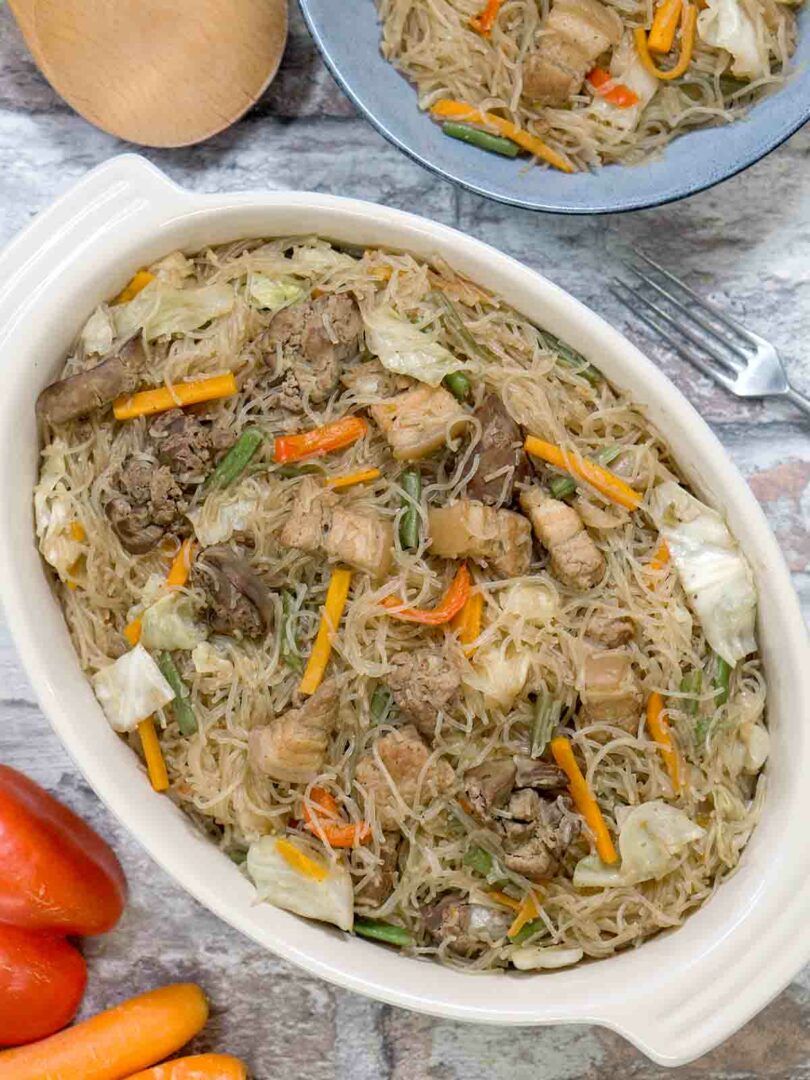
What to serve with pancit bihon
This pancit bihon recipe is a great meal idea or to serve at special occasions along with lechon. I personally love pairing this dish with pork siomai for a complete meal. Here ore other recommendations

Cooking tips
Other pancit recipes you may like
Pancit Bihon remains a staple in Filipino households, often served during birthdays and other special occasions symbolizing long life and good fortune.
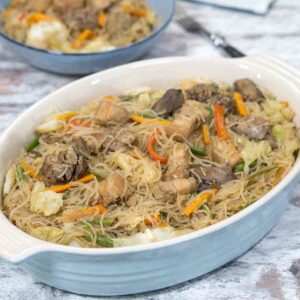
Pancit Bihon
Ingredients
- 350 grams pancit bihon (rice noodles)
- 300 grams pork belly (cut into strips)
- 300 grams chicken liver (cut into bite sized pieces)
- 1 medium onion (sliced)
- 3 cloves garlic (chopped)
- 2 tbsp vegetable oil
- 1 1/2 tsp salt
- 1 tsp ground black pepper
- 1 tbsp sugar
- ¼ cup soy sauce
- 2 cups water
- 1 medium carrot (julienned)
- 1 cup green beans (cut into small pieces)
- 1 small cabbage (sliced)
- 1/2 red bell pepper (cut into strips)
- 1/2 green bell pepper (cut into strips)
- 1 pc shrimp broth cube (optional)
Instructions
- Soak the bihon or rice noodles in warm water, for 8-10 minutes or until soften. Drain on a colander and set aside.350 grams pancit bihon
- Heat a wok or skillet on medium to high heat without oil. Tip in pork strips and cook until lightly browned and fat has rendered.300 grams pork belly
- Add the oil and sauté garlic until fragrant then sauté onion until translucent.1 medium onion, 3 cloves garlic, 2 tbsp vegetable oil
- Add the chicken liver, fry until browned, no pink is visible or cook through.300 grams chicken liver
- Tip in salt, ground black pepper, sugar and soy sauce. Mix and simmer for a minute.1 1/2 tsp salt, 1 tsp ground black pepper, 1 tbsp sugar, ¼ cup soy sauce
- Add carrots and green bean into the wok. Stir to distribute with other ingredients. Cook for 2-3 minutes.1 medium carrot, 1 cup green beans
- Next, add cabbage and bell peppers. Mix to incorporate then add water. Simmer for 3-5 minutes.1 small cabbage, 1/2 red bell pepper, 1/2 green bell pepper, 2 cups water
- Using a slotted spoon remove vegetables and transfer in a medium bowl. Set aside.
- Add the shrimp broth cube and more water if needed. Place softened bihon and gently submerged in liquid. Cook until liquid is reduces and absorbed by the noodles.1 pc shrimp broth cube
- Return the vegetables and carefully toss in with noodles to mix everything together.
- Remove from heat and serve warm to enjoy. Bon appetit.

